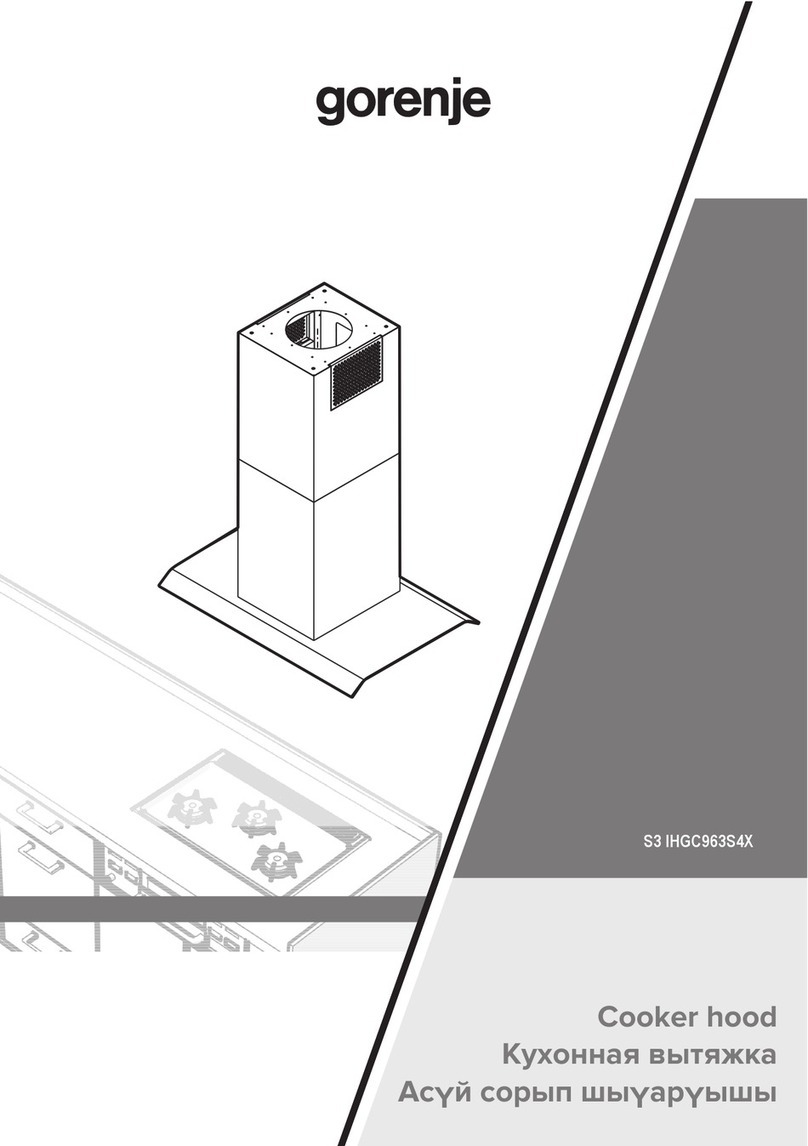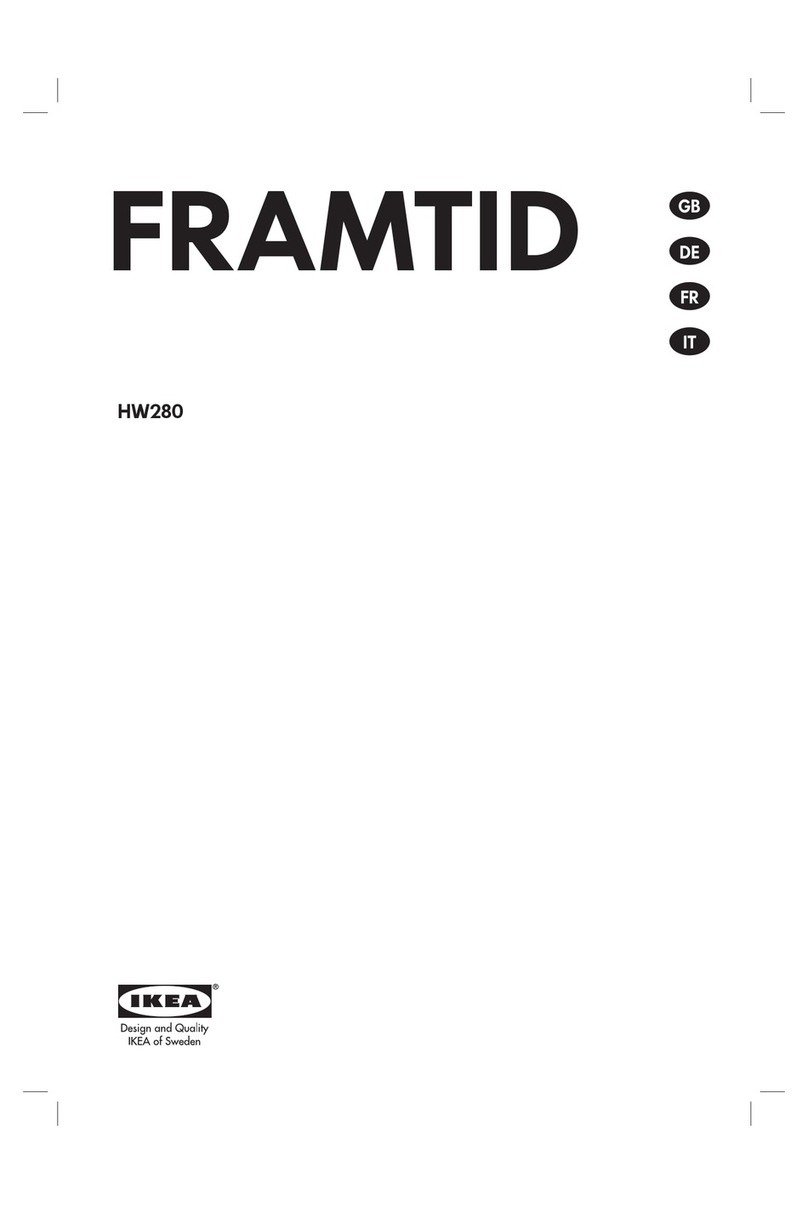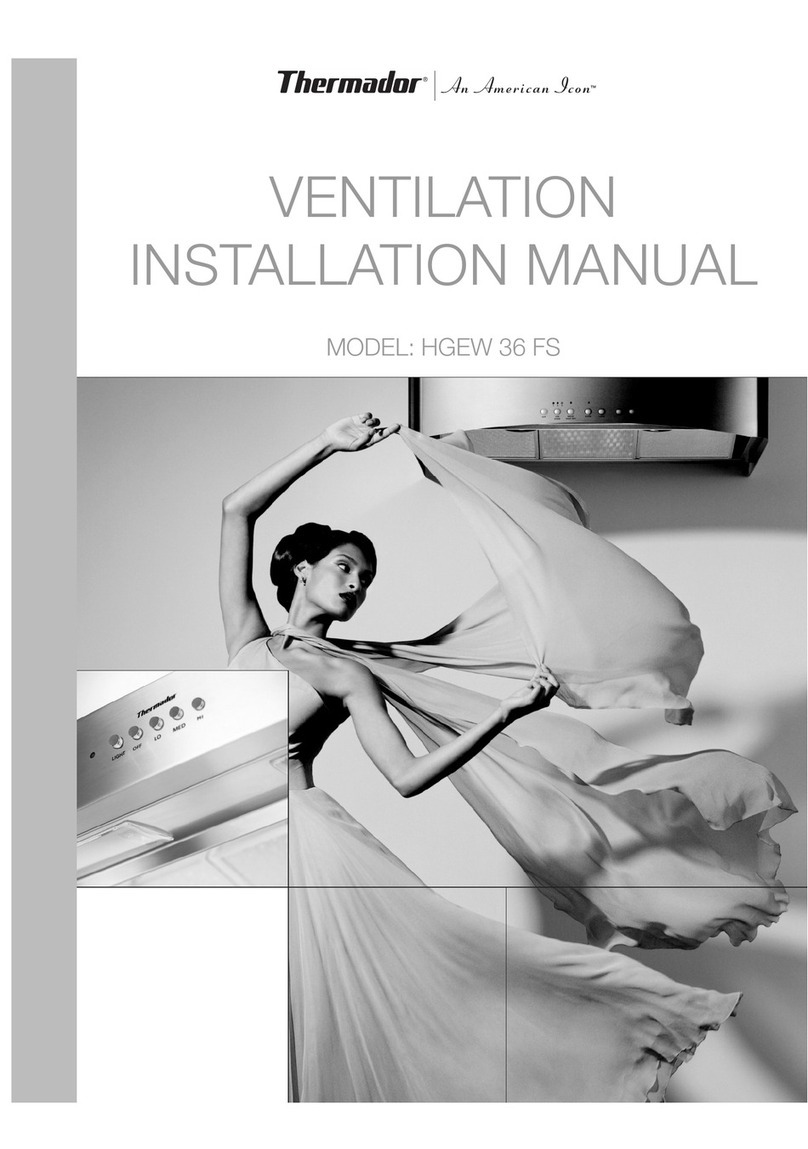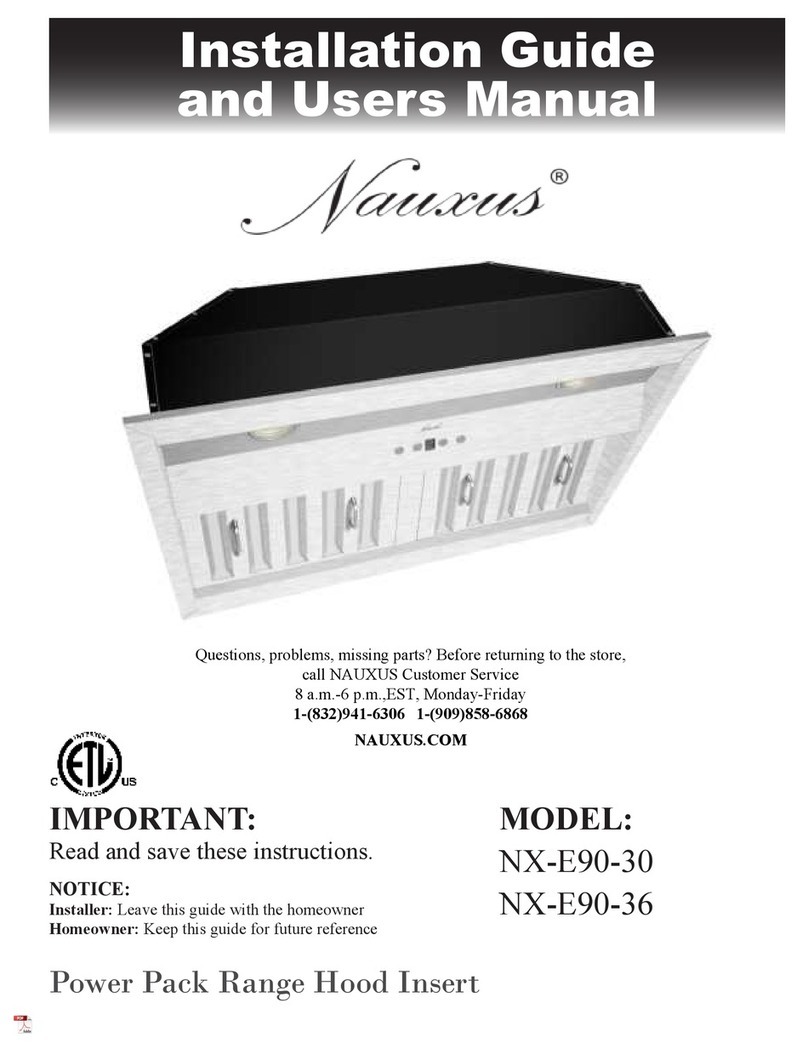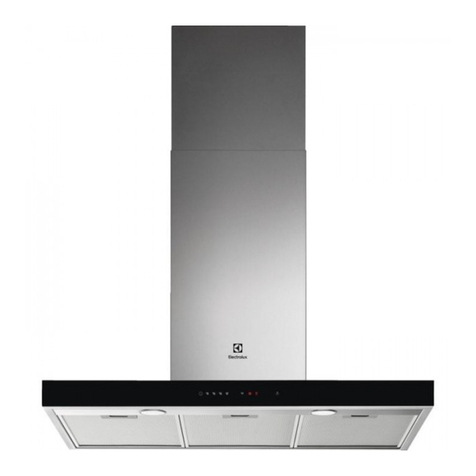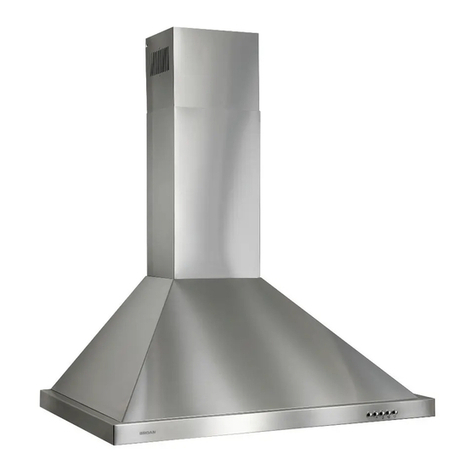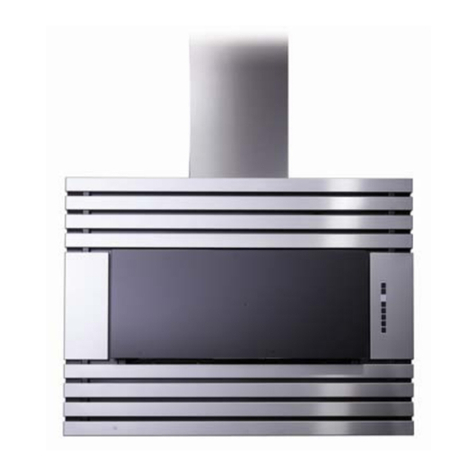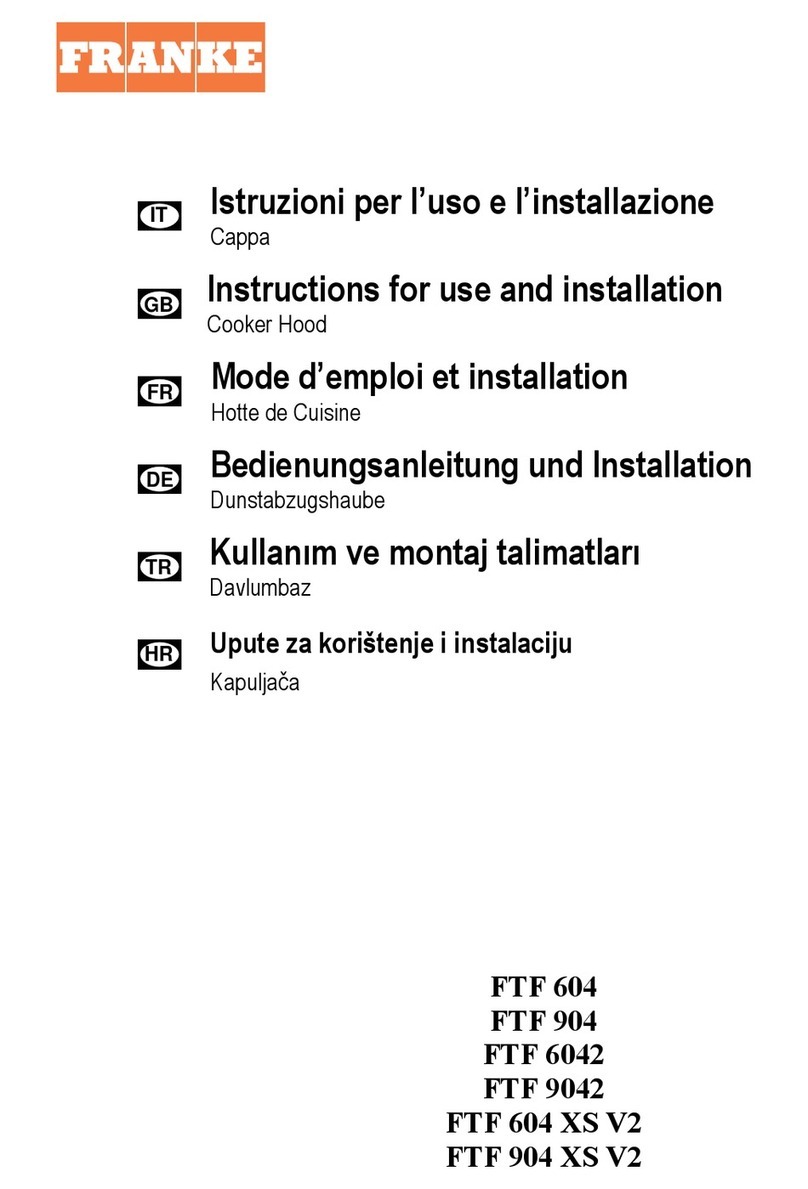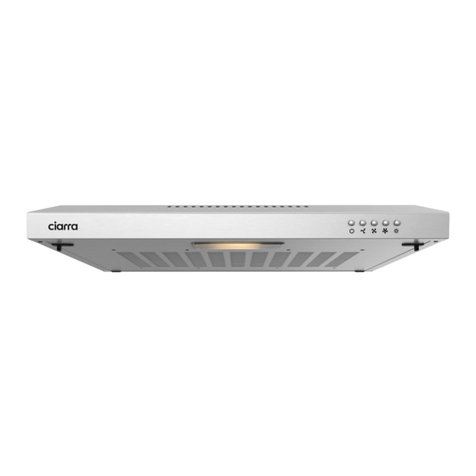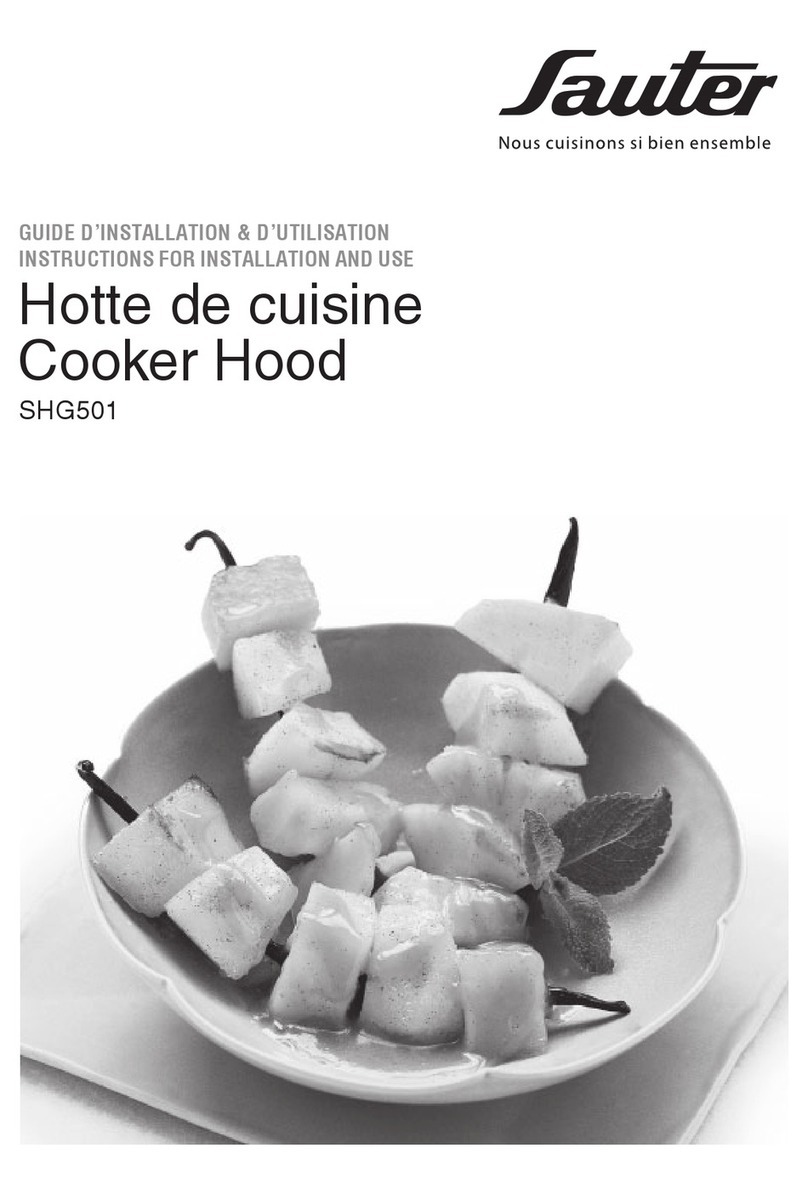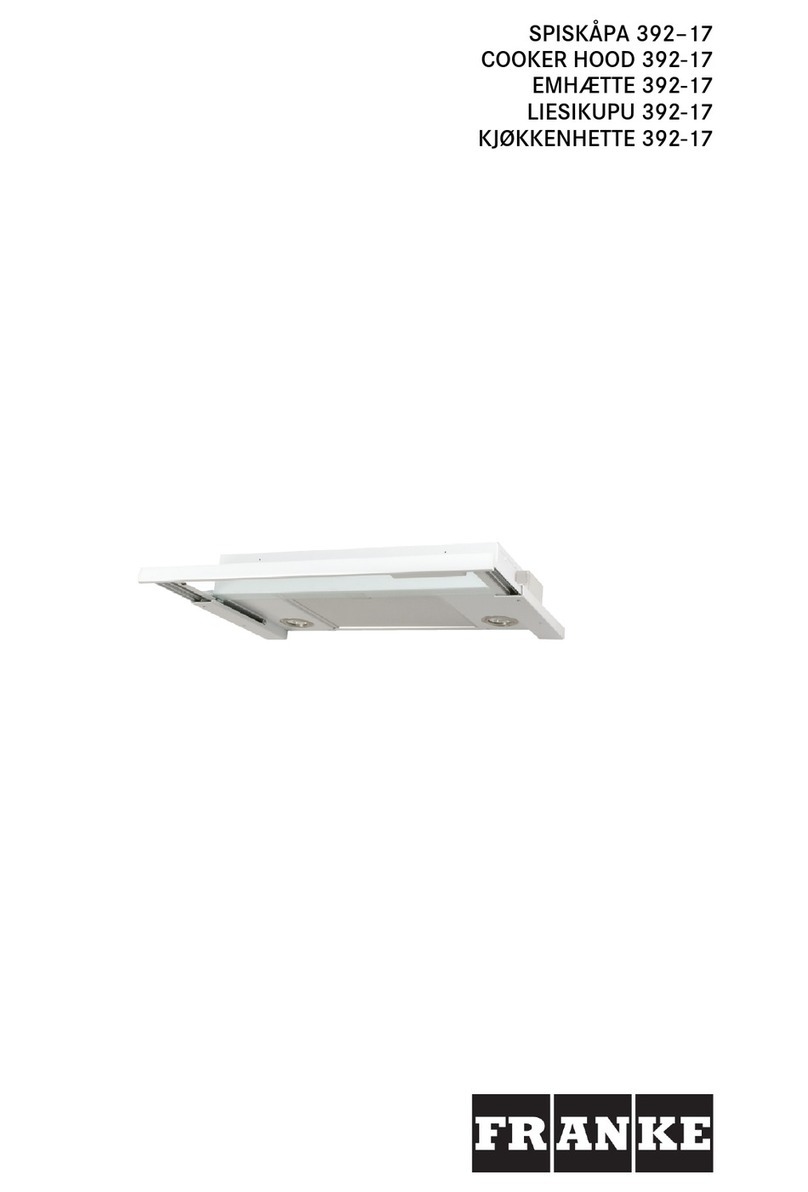
Important Safety Notice
Read all Instructions before Installing and operating this appliance
The installation in this manual is intended for qualied installers, service technicians or persons with•
similar qualied background. Installation and electrical wiring must be done by qualied profession-
als and in accordance with all applicable codes and standards, including re-rated construction.
DO NOT• attempt to install this appliance yourself. Injury could result from installing the unit due to
lack of appropriate electrical and technical background.
Range hood may have very sharp edges; please wear protective gloves if it is necessary to remove any•
parts for installing, cleaning or servicing.
Activating any switch ON before completing installation may cause ignition or an explosion.•
Due to the size and weight of this range hood, two people installation is recommended.•
To reduce the risk of re, electric shock, or injury to persons:
For general ventilating use only. • DO NOT use to exhaust hazardous or explosive materials and va-
pors.
The combustion air ow needed for safe operation of fuel-burning equipment may be affected by this•
unit’s operation. Follow the heating equipment manufacturer’s guideline and safety standards such
as those published by the National Fire Protection Association (NFPA), and the American Society of
Heating, Refrigeration and Air Conditioning Engineers (ASHRAE), and the local code authorities.
Before servicing or cleaning unit, switch power OFF at service panel and lock service panel to pre-•
vent power from being switched ON accidentally.
Clean grease laden surfaces frequently. To reduce the risk of re and to disperse air properly, make•
sure to vent air outside. DO NOT vent exhaust into spaces between walls, crawl spaces, ceiling, attics
or garages.
Ducted fans MUST always be vented to the outdoors.•
Use only metal ductwork and this unit MUST be grounded.•
Sufcient air is needed for proper combustion and exhausting of gases through the duct to prevent•
back drafting.
When cutting or drilling into wall or ceiling, be careful not to damage electrical wiring or other hid-•
den utilities.
All electrical wiring must be properly installed, insulated and grounded.•
Old duct work should be cleaned or replaced if necessary to avoid the possibility of a grease re.•
Check all joints on duct work to insure proper connection and all joints should be properly taped.•
Use this unit only in the manner intended by the manufacturer. If you have questions, contact the•
vendor.
To reduce the risk of a stove top grease re:
Keep all fan, bafe, spaces, lter, grease tunnel, oil container and grease-laden surfaces clean. Grease•
should not be allowed to accumulate on fan, bafe, spaces, lter, grease tunnel and oil container.
Always turn range hood ON when cooking at high heat or when cooking aming foods.•
Use high settings on cooking range only when necessary.•
Never leave surface units unattended at high settings. Boil overs cause smoking and greasy spillovers•
that may ignite. Heat oils slowly on low or medium settings. Page 1
